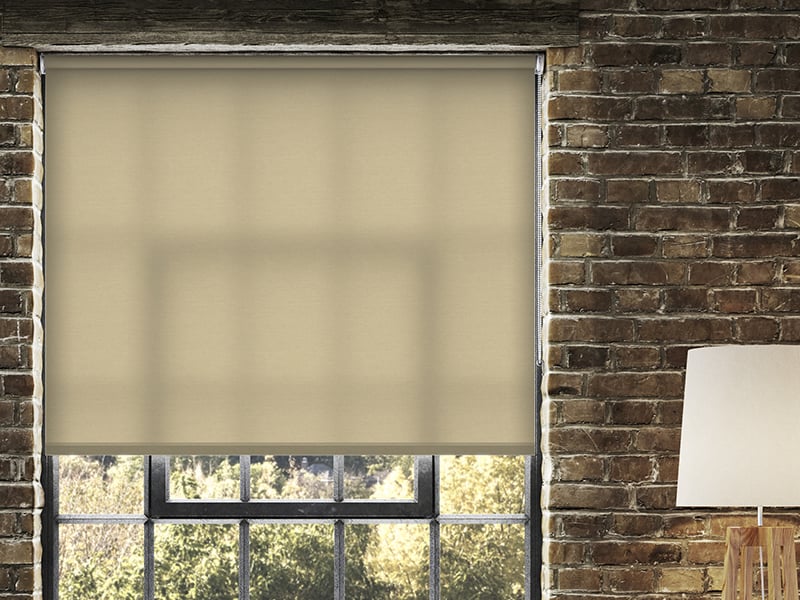DETAILED BLINDS FITTING EQUIPMENT GUIDE
Practical
Posted 19/11/2020
Introduction
Fitting your blinds is simple and straightforward. In this comprehensive guide, we give more detailed information about the equipment that is recommended you use to fit your blinds in an ideal scenario and what happens if you have a more complex install involving an RSJ. The majority of our customers will achieve perfect results with basic DIY skills and some basic tools.
Recommended Equipment:
- Masking Tape– To place over the areas your brackets will go and where you will be drilling into
- Pencil– To mark where you will drill holes for the brackets
- Drill with a hammer setting
Recommendation: Bauker 18V Cordless Combi Drill 2 x 1.5Ah
Top Tip: A drill with a hammer setting, is also known as a Combi Drill – Any Combi Drill will work fine!
Top Tip: If you plan on drilling into concrete, you will need a SDS Drill
- Drill Bits– Used to drill holes in the wall, the size of the drill bit will be how big the holes are
Recommendation: DeWalt Combination Drill Bit Set
Top Tip – HSS Drill Bits work best with a Combi Drill
- Rawl Plugs & Screws
Top Tips:
-Yellow rawl plugs (5mm) work best with a 5mm Drill Bit, and 6 to 8mm Screws
-Red rawl plugs (6mm) wok best with a 6mm Drill Bit, and 8 to 10mm Screws
-Brown rawl plugs (7mm) wok best with a 7mm Drill Bit, and 10 to 14mm Screws
(Further info down the page)
- Spirit Level– To make sure everything is completely straight and level
Recommendation: Minotaur Scaffold Spirit Level
Top Tip – There are lots of free Spirit Level Apps on the Apple and Android App Store
- Crosshead Screwdriver- To screw in your screws
Recommendation: Phillips Screwdriver
- Hammer– To hammer in the rawl pugs
Recommendation: Stanley Fibreglass Claw Hammer 16oz
Top Tip – A hammer is much better than a mallet
Rawl Plugs and Fitting to Different Surfaces
Knowing which rawl plugs and screws to use can often cause some confusion, especially when you don’t know much about DIY.
Here’s our full guide to choosing the right screws and rawl plugs for the surface you are fixing to.
- The three most popular rawl plugs are as follows:
- Yellow (5mm) Rawl Plug – As seenhere
- Red (6mm) Rawl Plug – As seenhere
- Brown (7mm) Rawl Plug – As seenhere
Top Tips:
-Yellow rawl plugs (5mm) work best with a 5mm Drill Bit, and 6 to 8mm Screws
-Red rawl plugs (6mm) wok best with a 6mm Drill Bit, and 8 to 10mm Screws
-Brown rawl plugs (7mm) wok best with a 7mm Drill Bit, and 10 to 14mm Screws
- When choosing which size to use, all you really need to consider is the weight of the item you’ll be installing – The heavier the item, the larger screws and Rawl plug you’ll need
- Blinds tend to be reasonably heavy by nature, so we’ve found that the Red Rawl Plug is usually the best option – If your blinds are particularly small and light, you may be able to use Yellow Rawl Plugs instead. A brown is normally only necessary if your blinds are very heavy and you are not supporting the blind with a central support. If you need Rawl Plugs for your installation we can send you a pack which has the yellow and red ones in it this will be adequate for the majority of installations.Just request these from our customer services team.
Top Tip – If in doubt, its always better to use a rawl plug that is too large, rather than too small!
- Now you know which size Rawl Plug to use, you need to consider which type of surface you are fixing your blinds to
- All you really need to ask yourself is, ‘is my wall hollow or solid?’ – To determine this, simply knock on the wall, if the knock is very loud, the wall is hollow, and is likely plasterboard
- If your wall issolid, the standard bullet shaped Rawl Plugs referenced previously will work fine
- If your wall ishollow, we’d recommend a Rawl Plug with wings instead, like the one here
Top Tip – If you are fixing onto wood, Rawl Plugs are not necessary – Although if it were chipboard it may give it a stronger fix
- Now you know which, size, and type of Rawl Plug to use, you are all set!
Top Tip – Remember, Yellow rawl plugs (5mm) work best with a 5mm Drill Bit, and 6 to 8mm Screws, Red rawl plugs (6mm) wok best with a 6mm Drill Bit, and 8 to 10mm Screws and Brown rawl plugs (7mm) wok best with a 7mm Drill Bit, and 10 to 14mm Screws
Please now watch our videos and specific fitting guides for each of our products HERE
What to do if you have an RSJ (Steel Lintel)
Essential Extra Equipment needed: HSS Titanium Drill Bit
- An RSJ is a steel lintel that stops you fixing blinds to the top of the recess
- It’s not always clear if your recess has an RSJ – If you drill into the top of your recess around one inch before meeting abrupt pressure, it’s extremely likely you have an RSJ
- The best option here, is to switch to fitting to the side or the face of the recess instead
- Remember, some blinds only allow for top fixing or face fixing, not side fixing
- If face fixing or side fixing is not an option, you are still able to drill through the RSJ – it will just take a lot of effort and some different drill bits
- The first thing you’ll need, is a HSS Titanium Drill Bit– This is absolutely essential as regular drill bits will not be able to cope with the RSJ and will wear down near instantly
- This type of drill bit is much stronger than a regular drill bit and will make the world of difference in getting through the RSJ
- After drilling the first hole, the drill bit will become extremely hot from the friction and inevitably cause the drill bit to soften – This will make it harder to drill the next hole
- After drilling for around 15 seconds, we recommend dipping the drill bit in a glass of water for at least 10 seconds, this will cool it down and increase the drill bits effectiveness
- It’s completely normal for each hole to get progressively more difficult to drill, this is because each hole will wear down the drill bit




 Track My Order
Track My Order
 My Account
My Account
 Wishlist
Wishlist
 Call now
Call now




